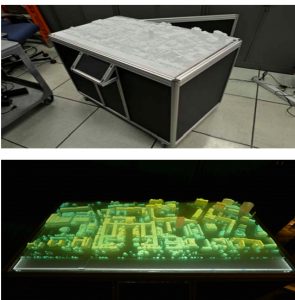3D Printing Helps Visualize Big Data

Latest News
October 17, 2014
 MIT’s LuminoCity is a 3D printed plastic model of a campus that is illuminated as data is collected.
MIT’s LuminoCity is a 3D printed plastic model of a campus that is illuminated as data is collected.More powerful computers are making it easier and faster to process massive amounts of data, but actually making sense of big data is still a challenge. How can you effectively boil giant data sets down in a way to help users visualize what the results mean?
Researchers at MIT’s Lincoln Laboratory have come up with one possibility: using 3D-printed models and projection to provide a concrete representation of big data.
Zachary Weber and Vijay Gadepally printed a 3D model of MIT’s campus (dubbed LuminoCity) out of translucent plastic. A projector connected to a laptop illuminates the model, altering colors based on different data inputs.
The team filtered a portion of Twitter feed using the Twitter DecaHose tool looking for tweets that were geolocated on campus, and used the model to display the types of content created at different locations. Users could parse the data on an interactive screen.
According to the MIT Technology Review:
Weber and Gadepally say their approach is particularly useful when groups of people have to access the data at the same time. They give the example of city planners studying the patterns of traffic that occur in cities. That kind of data is difficult to reason about at a group level without a display that everyone can see and interact with. And the big advantage is that a key part of the data set, the model, is fixed—set in stone, almost. That allows complete flexibility with the data that needs to be crunched but complete inflexibility with the data that doesn’t need to be touched.
The 3D-printed approach could provide a lower cost alternative to expensive augmented reality systems that can provide similar displays.
MIT’s Department of Civil and Environmental Engineering also used the model for its CLAIRITY project, a network of sensors built with 3D-printed housings that are used to measure levels of gases and particulates around the campus. Nodes on the model light up based on the sensor inputs.
You can read more about their research here.
Source: MIT Technology Review
Subscribe to our FREE magazine, FREE email newsletters or both!
Latest News
About the Author
Brian Albright is the editorial director of Digital Engineering. Contact him at [email protected].
Follow DE





